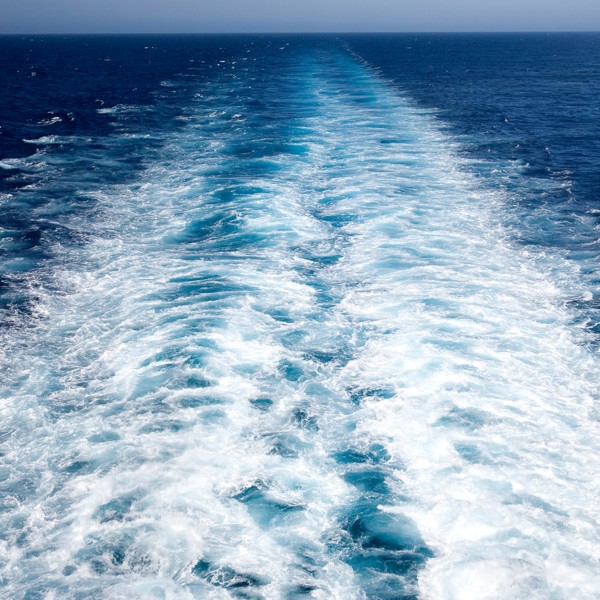
To evaluate shipping's environmental impact, all types of impact from all ships operating in an area need to be included in the assessment.
Biological and chemical pollution
Organisms colonizing the hull, biofouling, is a severe problem that may spread non-indigenous and potentially invasive species. Biofouling increases the resistance through the water and thereby fuel consumption. To minimize the problem of biofouling, many ships are painted with toxic antifouling paints. Analogous with the strive to reduce biofouling on the hull, it is important to eliminate growth inside the cooling system, why often toxic metals are released in the cooling water.
Ballast water is also a major vector for spreading of non-indigenous species and the treatment of ballast water may give rise to unwanted disinfection byproducts.
Sewage, and grey water from sinks, shower, laundry and galley (kitchen) are mixtures of organic matter, nutrients and cleaning agents.
Tank cleaning residues may contain whatever has been transported in the tanks, however, for some substances there are required procedures for prewash leaving residues in port reception facilities. A scrubber is an exhaust gas treatment system, using a fine spray of seawater to reduce the emissions of acidifying sulfur oxides to the atmosphere. Unfortunately, also other pollutants are washed out and the large volume of scrubber effluent, discharged back to the sea, is a potent mixture causing severe harm to marine ecosystems.
Bilge water is also a mixture, primarily condense water from the engine room, with cleaning agents and residuals of fuel oil and lubricants. Most ships use oil for propeller shaft lubrication, which implies a constant leakage of these oils that often are more toxic than fuel oils.
Energy pollution
In addition to the ship generated sources of biological and chemical pollution, described above, ships also give rise to energy pollution both as wake wash (surface waves) and as underwater radiated noise. Another type of energy pollution is the turbulent ship wake, which may act as a barrier affecting the connectivity in the marine ecosystem. The turbulent wake will also govern the spread of pollutants discharged from the ship and affect air-sea gas exchange through the formation of bubbles in the wake.
Regulatory perspectives
From the atmosphere, we also have indirect deposition of especially nitrogen and sulfur oxides, along with particulate matter. Solid waste, such as food waste may be allowed to grind and throw overboard. Many of these subsystems or onboard activities are regulated individually, primarily through MARPOL by the International Maritime Organization. Yet some are insufficiently regulated, such as scrubbers and antifouling paints, or even unregulated such as cooling water. In addition, from an environmental management perspective, many of the subsystems contribute to the same type of pressures, e.g. contaminants from scrubbers, antifouling paints and cooling water, but they are not assessed in a holistic way via the shipping regulations.
More about the research area
- Ida-Maja Hassellöv's publications and projects in Chalmers Research (Opens in new tab)
- Marine environment at risk due to ship emissions, Chalmers.se (Opens in new tab)
- Millions in costs due to discharge of scrubber water into the Baltic Sea, Chalmers.se (Opens in new tab)
- Ships trigger high and unexpected emissions of the greenhouse gas methane, Chalmers.se (Opens in new tab)
Vacancies
At the moment, we have no vacancies.


